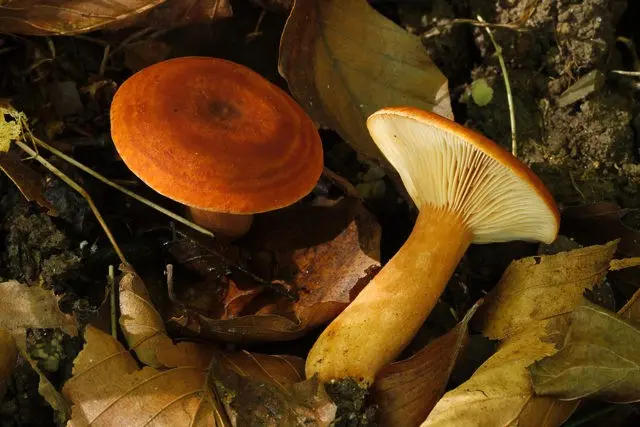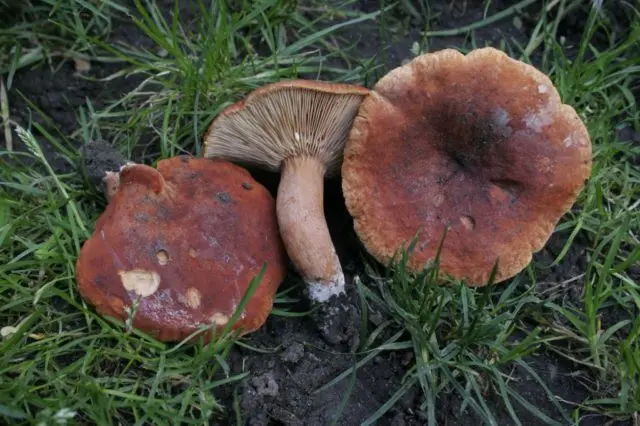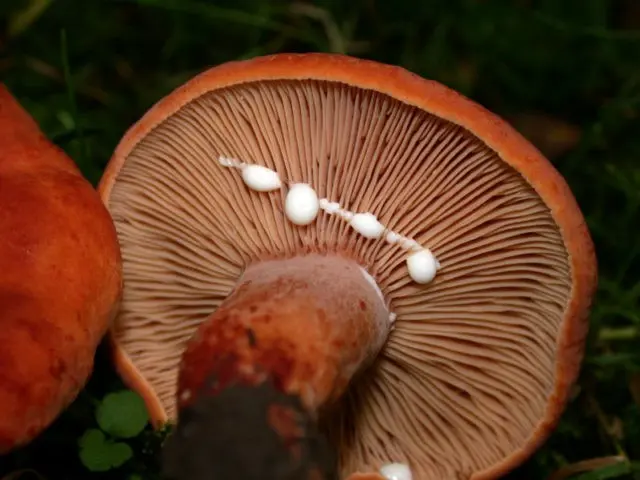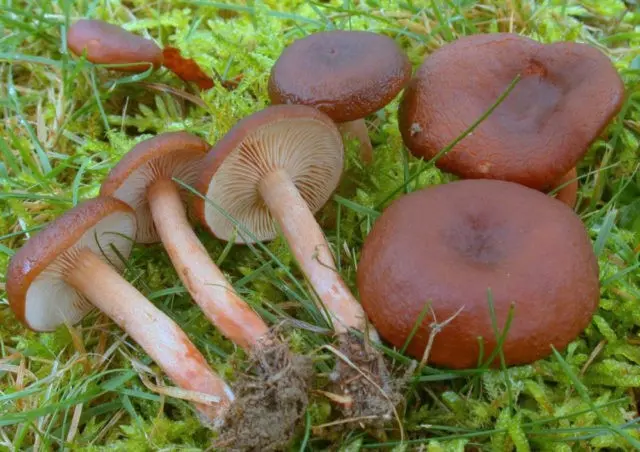Contents
The brown-yellow milky (Lactarius fulvissimus) is an agaric fungus from the Russula family, the Milky genus. It was first classified by the French mycologist Henri Romagnese in the middle of the last century.

The second scientific synonym for these fruiting bodies: slimy breast
Where does the milky brown-yellow grow
It is widely distributed in deciduous forests, but is extremely rare in pine forests and spruce forests. They form a mutually beneficial symbiosis with beeches, hazel, poplars, lindens and oaks. The first mushrooms appear in July and continue to grow until the end of October.

Milky brown-yellow in a mixed forest
What does the milky brown-yellow look like
Young mushrooms have rounded-convex strongly tucked caps. As they grow older, they straighten out, becoming at first umbrella-shaped, then prostrate and even cup-shaped, concave. The edges are evenly rounded, thin. Sometimes wavy-toothed, deformed, directed downwards with a small neat roller. In overgrown specimens, the cap often has an irregular, folded shape, with broken and sawtooth edges. At the junction with the leg there is a noticeable depression with a small rounded tubercle.
It has an uneven color, stripes are noticeable, uneven rounded spots, the middle is darker. The color varies from reddish brown and reddish black to light sand, almost cream. The diameter of adult specimens reaches 9 cm. The surface is smooth, with a slight gloss, in wet weather a little slimy.
The pulp is thin, fragile, gray-white, at the site of damage it actively secretes snow-white juice, darkening to creamy yellow. The taste is sweetish-soft, peppery aftertaste. The smell is neutral, sometimes it can be unpleasant.

Closer to the root, the leg is covered with a white, damp down
The hymenophore plates are frequent, incremented, slightly descending along the stem. Smooth, uneven length. The color can be white and cream, yellowish red, pinkish yellow or the color of coffee with milk.
The milky brown-yellow has a cylindrical or barrel-shaped, often curved leg. Smooth, slightly velvety, growing up to 8 cm and having a thickness of 0,6 to 2,3 cm. The color is uneven, shapeless spots. The color is lighter than the cap, from cream-buff and golden-pink-brown to orange-chocolate and rich rusty.

The cap has tucked edges, on the plates you can see drops of thick white juice
Twins and their differences
In its appearance, the brown-yellow lactic is very similar to some representatives of its own genus.
Milky watery milky. Conditionally edible. The cap has a smooth smooth surface, brownish-brown color with a light border around the edge. Milky juice is mild in taste, not caustic.

The hymenophore plates are white-cream, with reddish spots, the leg is light
Milky reddish-belted. Inedible, non-toxic. It is distinguished by a deformed-wrinkled cap and hymenophore plates, which acquire a light azure hue when damaged.

This species creates mycorrhiza exclusively with beeches.
Is it possible to eat a milky brown-yellow
Milky brown-yellow refers to inedible mushrooms. No toxic substances were found in its composition, the nutritional value is extremely low.
Conclusion
Milky brown-yellow grows in deciduous forests and old parks. Distributed in the temperate climate zone and the southern regions of Our Country and Europe. It is inedible, has poisonous counterparts, so inexperienced mushroom pickers should be extremely careful.









